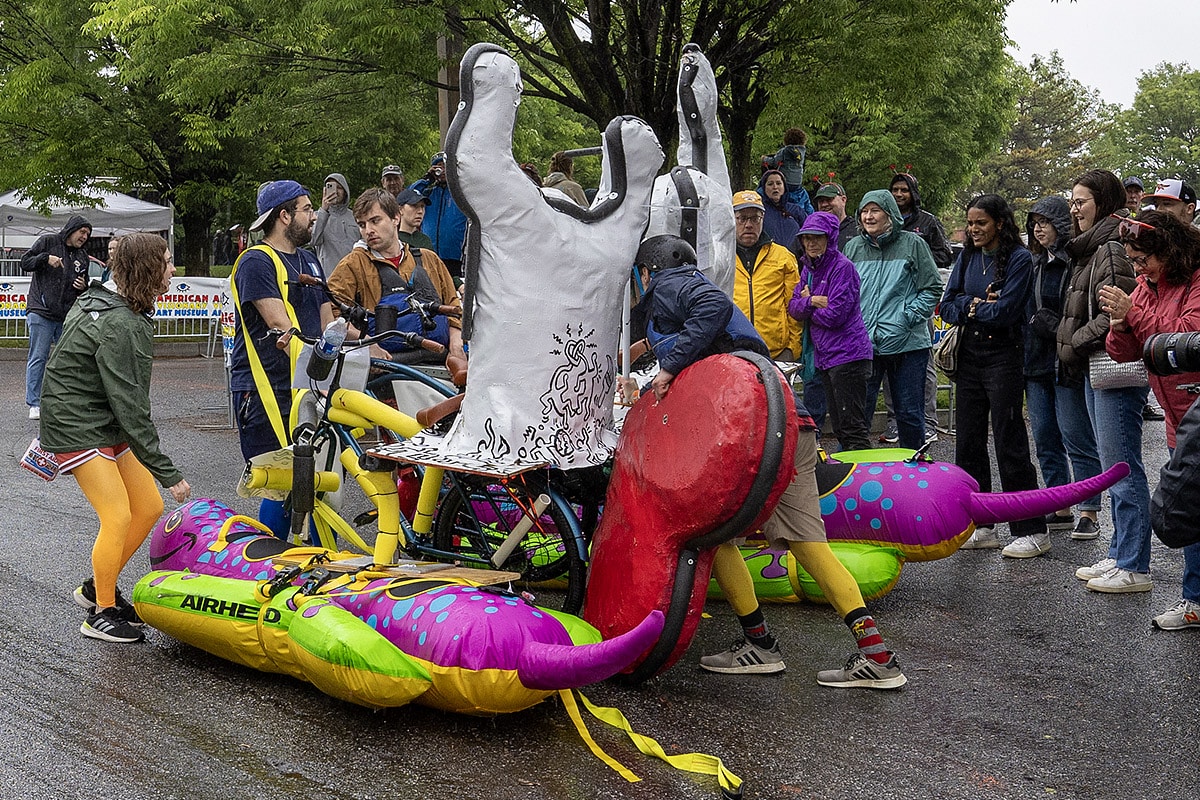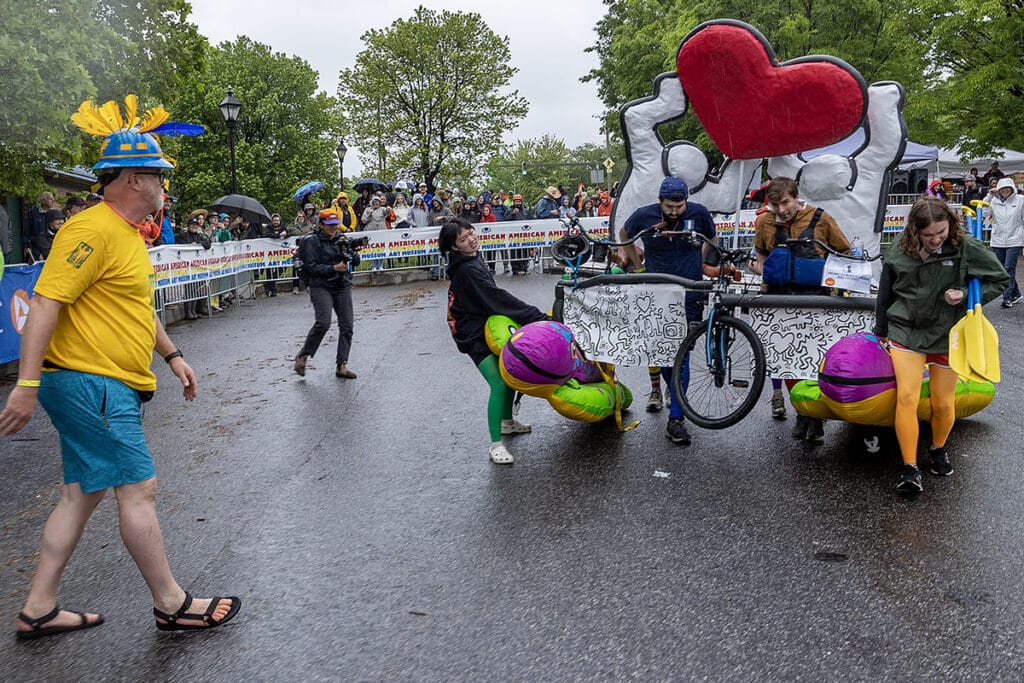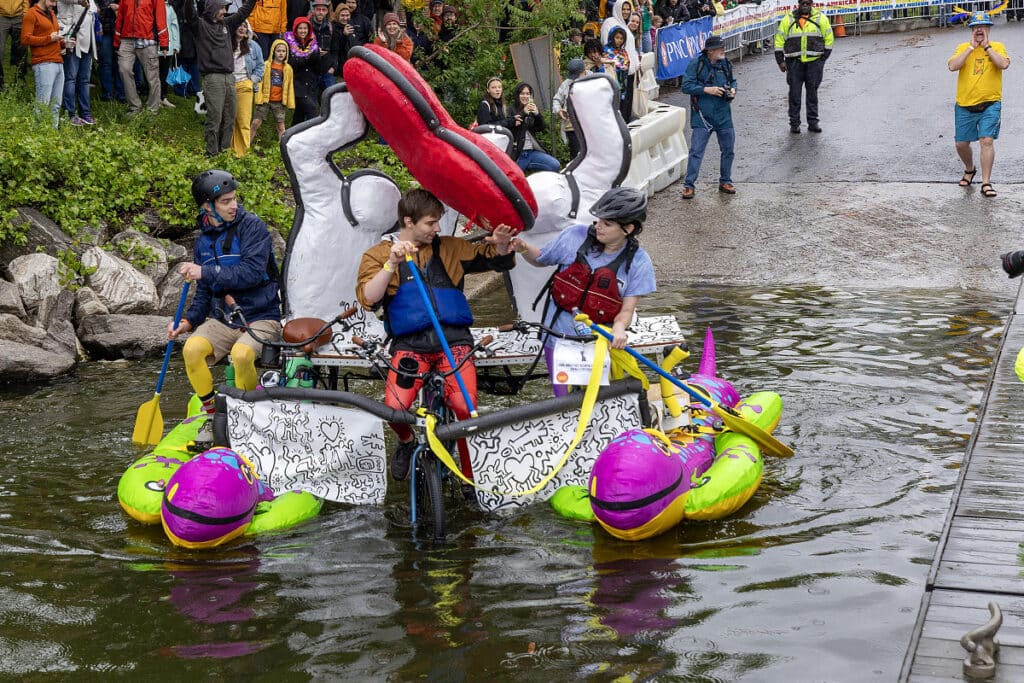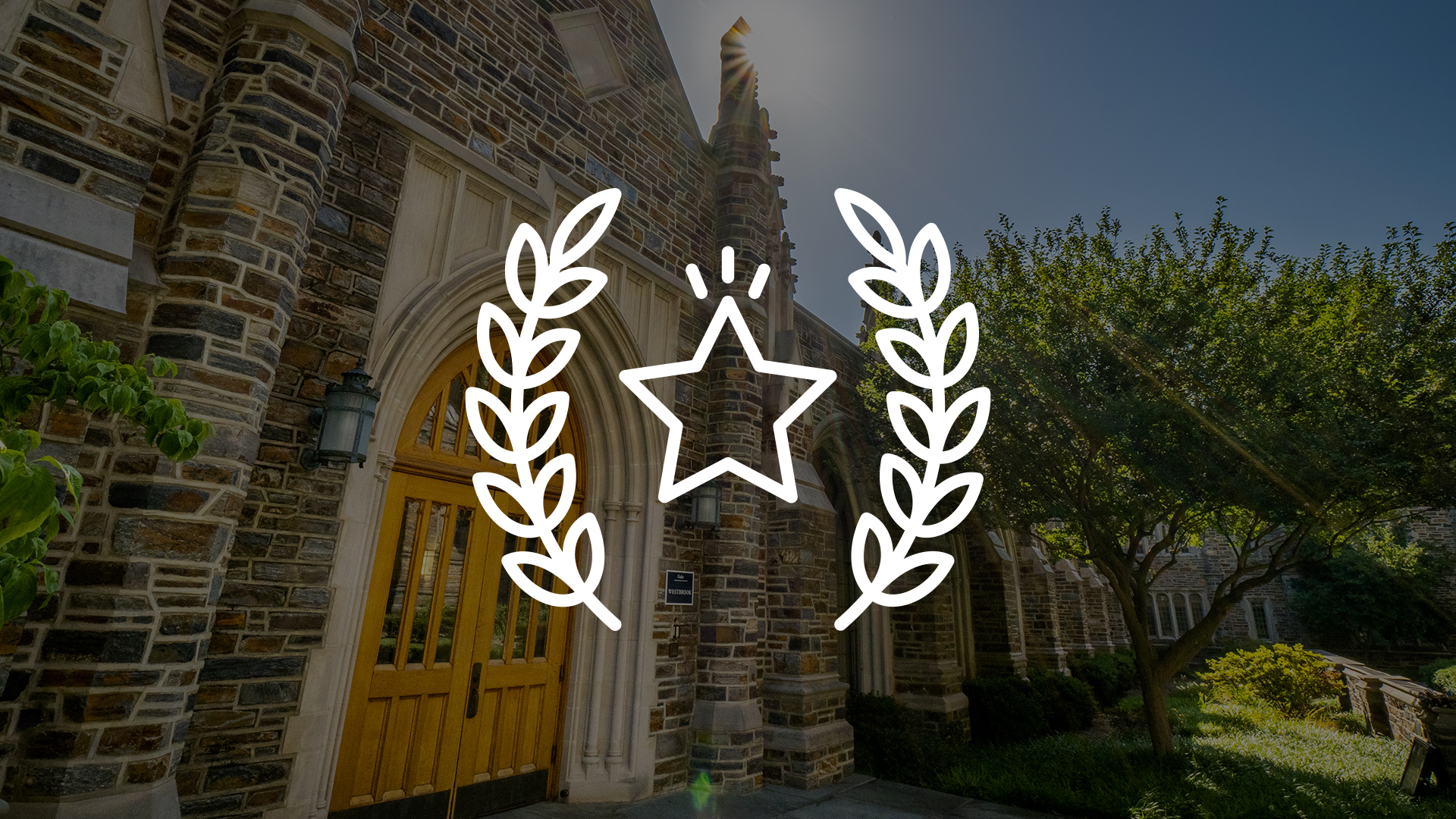
Seeing Duke in a Whole New Color
New program allows color blind Duke personnel to borrow EnChroma color enhancing glasses from the library for up to a week at a time
Seniors in their MEMS capstone participated in this year’s Baltimore Kinetic Sculpture Race, an annual event that dates back to the 1960s.

Kinetic sculpture races are meant to be silly. For those unfamiliar, these events often involve intricate, wacky and (sometimes) functioning human-powered “vehicles” racing across various terrain. The Baltimore Kinetic Sculpture Race (also known as the East Coast Championship) began in 1999 when Rebecca Hoffberger, founder of the American Visionary Art Museum, heard about the World Championship on television.
On a rainy day in May this year, the race took place on 800 Key Highway, with sculptures separated from general traffic by cones and bike lanes. Students from MEMS Senior Design classes represented Duke Engineering by way of a sculpture named “This Does Not Belong in a Museum” that channeled the popular artistic style of Keith Haring.
The 3D three-bicycle sculpture, fitted with enough room for three pilots or riders, depicted two figures holding up an enormous heart. The sculpture went through multiple iterations to make it to Baltimore, from adjusting for steering issues to accounting for an appropriate floating apparatus.
Yes, these sculptures were meant to float on water, too.

To practice this, the group took parts of their sculpture to the Wilkinson Recreation Center’s indoor pool. “We started to push it onto the water and were thinking ‘theoretically, it should work’,” said Benjamin Johns, a biomedical and mechanical engineering senior.
And it did.
The group can be seen in practice videos applauding and cheering in celebration as their massive efforts pay off. “Some parts of the sculpture slowly started to sink in the pool, but it ultimately floated, and that was a big success,” Johns shared.
Their team needed to adjust their design for a number of failures prior to the race, and as a unit, they did what most successful engineers do: fail upward. Johns said they needed to quickly fix straps on parts of the sculpture after putting it into the pool, as well as tend to a snapped bar that suddenly gave way when the riders hopped on board.
“I didn’t think anybody would sign up for the project,” said Sophia Santillan, associate professor of the practice in the MEMS department. “I thought it was too silly, but several students embraced the silliness of the kinetic sculpture and its very real design challenges.”
But through this silly race that saw participants dress up in goofy animal costumes and matching team swag, Santillan says her MEMS group exhibited real grit. “They definitely did mitigate failures,” she shared. “And they did so in both their analysis and in their structural testing.”
From 8 AM morning calls in the Garage Lab to deconstruct what they’d learned throughout the semester to shoving all the parts and tools into a U-Haul trailer for travel, the team engineered as best they could ahead of the race. After a six-hour drive to Baltimore, the team assembled their sculpture, passed safety inspections and hoped for success in the rain.
“Alright, so you are ‘This Does Not Belong in a Museum’?” asked one race organizer.
“Yes,” Johns replied, confidently.
“I’m feeling really great,” said Rebecca Edelman, a mechanical engineering senior, the day of the race. “This is such a fun ambiance and different experience. I’m so glad that we’re here and competing.”
Out of the gate, a number of sculptures broke down, but the Blue Devils were riding high on the open arms of their Keith Haring tribute, even in the Baltimore rain. That is, until a little after the first mile.
“On race day, they were doing really well during the first mile until I got a text from them that they had broken down,” Santillan shared. Johns described hearing a loud crack, and it was because of their front right caster wheel, which was added to help make turning possible. “And at that point we pulled over and thought, ‘What are we going to do now?’” said Clara McMillan, a mechanical engineering senior.

But the team was determined to make it to the next checkpoint: the water section.
After some deliberation, and as a show of “pride,” as Johns put it, all six team members disassembled the caster parts and pushed the large sculpture through downtown Baltimore, waving at onlookers and traffic that cheered them on. Eventually, they made it to and across the river, even though at one point forward progress forced them to knock the heart off the top of their sculpture. But with a true “nobody left behind” mentality, one race volunteer kayaker pushed the heart up Baltimore Harbor along with them.
Soaking and carrying a punctured, oversized heart in the style of Keith Haring up the pier, the team fought through exhaustion to make it to the next section of the race. “Are you continuing or are you guys done?” asked another race organizer.
“We’re going to try,” the team replied.
But after dragging their sculpture in the rain, with the combination of bad weather and sculpture conditions, the team made the call . “There is something to be said that a lot of Senior Design projects don’t make it out of the lab,” McMillan shared. “They’re kind of designed to be this polished thing you show off, but they don’t make it into a consumer’s hands.”
Yet the Senior Design team in MEMS proposed, built, and used as intended an engineering project in a demanding open competition. And for the members who put their hearts into ‘This Does Not Belong in a Museum,’ making it to Baltimore ultimately made all the difference.
“I was just overall really pleased with how the students performed on this project,” Santillan shared. “They were really looking forward to race day, and so I was worried they’d feel disappointed when the sculpture broke during the race. Even immediately after the event, they talked about what they would do in another, improved iteration of the project. The team was so quick to learn from the experience and pivot like the engineers they are.”

New program allows color blind Duke personnel to borrow EnChroma color enhancing glasses from the library for up to a week at a time

Researchers give robots a sense of touch by “listening” to vibrations, allowing them to identify materials, understand shapes and recognize objects just like human hands

Highly competitive national awards will help new and returning BME graduate students and post-docs conduct exciting research